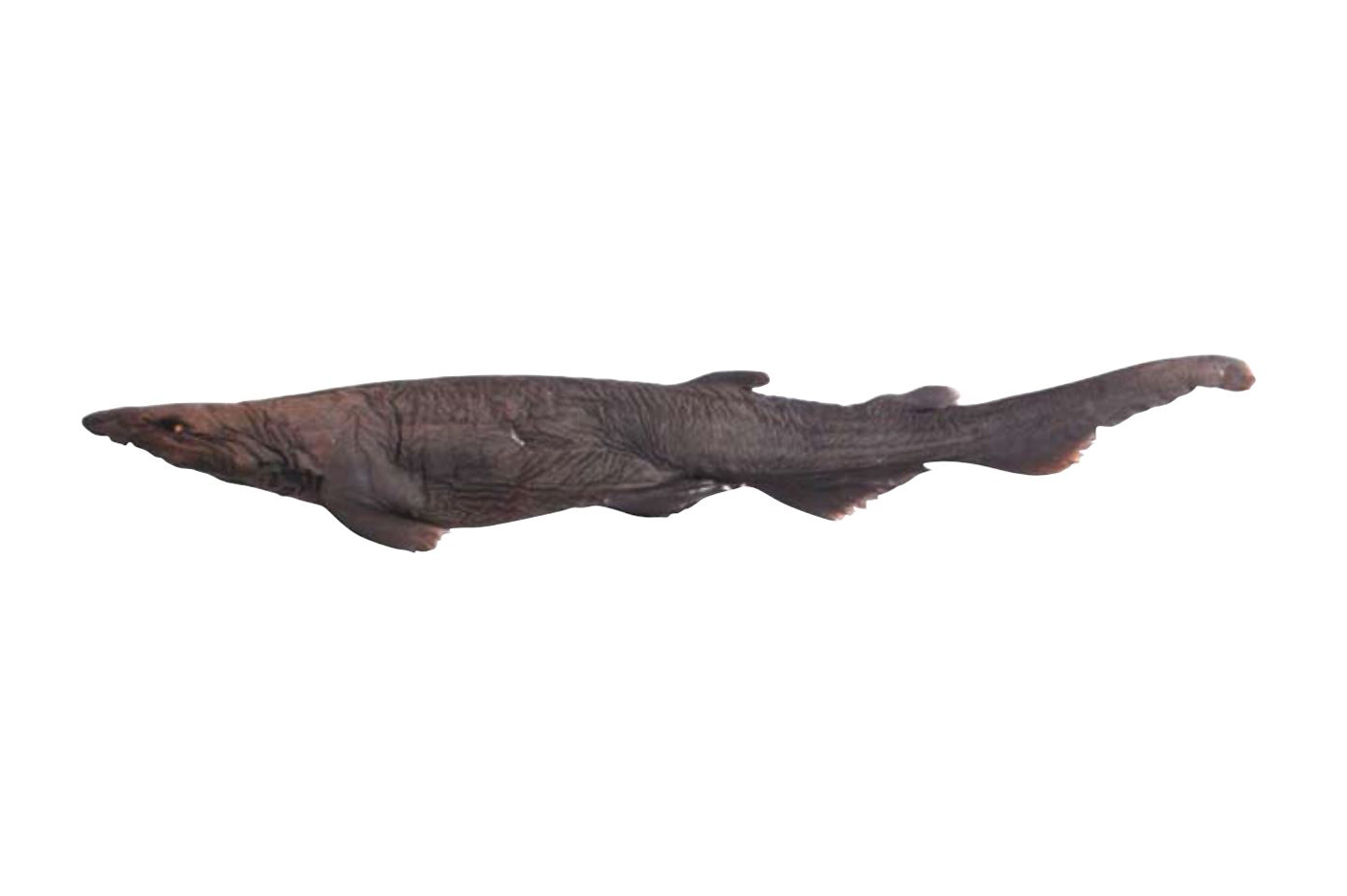Fleshynose Catshark, Apristurus melanoasper Iglésias, Nakaya & Stehmann 2004
Other Names: Black Roughscale Catshark

A Fleshynose Catshark, Apristurus melanoasper, from Australia. Source: Fig. 1A, in Nakaya, Sato & Iglesias (2008) CSIRO Marine and Atmospheric Research Paper No. 022: 61-74. License: CC by Attribution-NonCommercial
Summary:
A uniformly black to dark brown catshark with pale teeth, black naked tips on the fins, and a moderately long, slender fleshy snout. The dermal denticles are large, giving a rough texture to the skin.
Cite this page as:
Bray, D.J. 2023, Apristurus melanoasper in Fishes of Australia, accessed 01 Jul 2025, https://fishesofaustralia.net.au/Home/species/2617
Fleshynose Catshark, Apristurus melanoasper Iglésias, Nakaya & Stehmann 2004
More Info
|
Distribution |
Sugarloaf Point, New South Wales, around southern Australia including Tasmania, to Cape Leeuwin, Western Australia. Elsewhere the species is widespread with a patchy distribution in the northern Atlantic and Southwest Pacific: New Caledonia, New Zealand and the North Atlantic. Inhabits the continental slopes and seamounts. |
|
Features |
Vertebrae, monospondylous + precaudal diplospondylous vertebrae 36-43 + 26-32 Snout moderately long, slender, length less than 4 times eye diameter and less than width, fleshy and tapering evenly anterior to nostrils; teeth medium-sized, widely spaced, lacking distinct ridges and with 3–5 cusps, central cusps much larger than adjacent cusps; denticles tricuspidate, closely spaced; dorsal fins similar in size; anal fin triangular, low and long, its height much less than its base length; pectoral fins small but longer than head width near mouth. |
|
Biology |
Mature males are >61.5 cm TL and females are >59.6 cm TL. Little is known of the biology of this species, and the reproductive mode is assumed to be oviparous. |
|
Etymology |
The specific name melanoasper is from the Greek melanos (= black, dark coloured) and the Latin asper (= rough), in reference to the black coloration and rough skin of this species. |
|
Species Citation |
Apristurus melanoasper Iglésias, Nakaya & Stehmann 2004, Cybium 28(4): 346, figs 1-5. Type locality: Lorien Bank, 54°21.5'-54°22.0'N, 19°28.1'-19°44.4'W, North Atlantic, depth 1243-1260 m. |
|
Author |
Bray, D.J. 2023 |
|
Resources |
Fleshynose Catshark, Apristurus melanoasper Iglésias, Nakaya & Stehmann 2004
References
Compagno, L.J.V., Dando, M. & Fowler, S. 2005. A Field Guide to the Sharks of the World. London : Collins 368 pp.
Iglésias, S.P., Nakaya, K. & Stehmann, M. 2004. Apristurus melanoasper, a new species of deep-water catshark from the North Atlantic (Chondrichthyes: Carcharhiniformes: Scyliorhinidae). Cybium 28(4): 345-356. https://doi.org/10.26028/cybium/2004-284-006
Last, P.R. & Stevens, J.D. 1994. Sharks and Rays of Australia. Canberra : CSIRO Australia 513 pp. 84 pls. (as Apristurus sp. C)
Last, P.R. & Stevens, J.D. 2009. Sharks and Rays of Australia. Collingwood : CSIRO Publishing Australia 2, 550 pp.
McCormack, C., Iglésias, S. & Kyne, P.M. 2016. Apristurus melanoasper. The IUCN Red List of Threatened Species 2016: e.T42700A70708776. https://dx.doi.org/10.2305/IUCN.UK.2016-1.RLTS.T42700A70708776.en. Accessed on 21 August 2023.
Nakaya, K., Sato, K. & Iglésias, S.P. 2008. Occurrence of Apristurus melanogaster from the South Pacific, Indian and South Atlantic oceans (Carcharhiniformes: Scyliorhinidae). CSIRO Marine and Atmospheric Research Paper No. 022: 61-74. http://hdl.handle.net/102.100.100/118353?index=1
White, W. 2008. Shark Families Heterodontidae to Pristiophoridae. pp. 32-100 in Gomon, M.F., Bray, D.J. & Kuiter, R.H. (eds). Fishes of Australia's Southern Coast. Sydney : Reed New Holland 928 pp.



